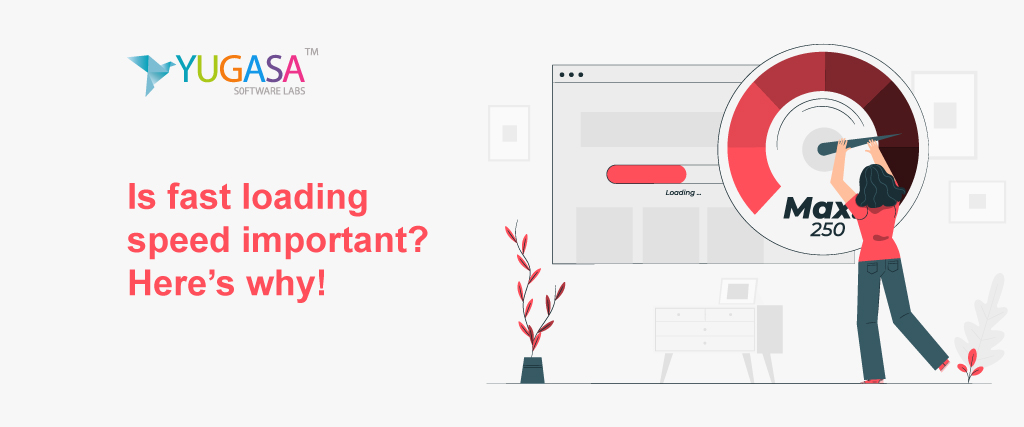Web Page Speed: For a couple of years now, page speed has become a ranking factor. What is more, its value to the SERP positions on your web is only rising higher each year.
What began as another measure to assess how easily a person can see the content they have requested has become a major predictor of the overall user experience of the site. Faster-loading sites deliver content faster and meet the demands of the customer quicker.
Will your website’s speed have so much of an effect on your sales?
The reaction to that is yes, it does. Pages that load slowly are penalized by Google and other search engines, but most significantly, by the consumers. They stop visiting or even if they visit, they bounce, and they’re not buying from you.
If your website loads slowly, you’ll miss out heavily on revenue and traffic.
Thankfully, it’s not that difficult to improve your page speed. To make your site load faster and boost traffic and organic search engine results, there are several tools, tips, and tricks you can use.
You will discover the meaning of web load time today and just what you can do with it.
So, let’s talk about what exactly Web Page Speed refers to.
What do you exactly mean by page speed?
Page speed is defined as the amount of time it takes to show all the data on a given page or the time required for a browser to retrieve the first byte of a web server (or, to put it in less technical terms, page speed is how long it takes for the browser to receive the first batch of information from the server).
The page speed is influenced by any page feature – its HTML code, CSS that styles page elements, various JavaScript files, photos, videos, and other multimedia and so much more.
In reality, the page speed can be influenced by everything from the size of an element (measured in kilobytes) to the speed of the web server they are hosted on.
Page speed is tested independently on the computer and mobile devices. This is because of gaps in technologies between the two, resulting in a distinct desktop and smartphone user interface.
But what is the difference between page speed and site speed!
Although they may sound identical, page speed is not the same as site speed. Site speed is the average on a website of many sample pages. On the other hand, page pace specifies how long a patient can wait to begin consuming an actual page.
Why Page Speed Matters?
For consumers, Page speed is important because, well, quicker websites are more successful and have a much better user experience on the website.
Mobile apps, too, prioritize speed in a website’s ranking. 73 percent of users reported visiting a website that loaded too slowly in the same poll. Page speed also determines the rate of conversion.
For instance, Walmart.com noted that they saw a two percent change in conversion with every second of increased page speed.
But page speed is also critical for search engine optimization, perhaps less intuitively (SEO).
Google revealed in 2010 that page speed would be used as one of their search index’s ranking criteria.
Google revealed in 2017 that they would give even more attention to page speed, adding mobile site speed to rate sites on their “mobile-first” pages, or pages that individualize mobile site rankings.
Google later worked with Accelerated Mobile Pages Project (AMP) – a project that seeks to make mobile devices load pages more quickly.
Parameters for measurement
Page speed is a dynamic aspect, and it pays off to consider how it is being calculated to solve any difficulties relevant to it.
Many metrics influence page speed or are linked to it:
- Load time, which determines how long it takes to view a whole page in the window of a browser. It is worth remembering that all files and scripts must be loaded and all HTTP requests must be met for it to happen.
- Page size determines the cumulative size of all services that are used on a page. Code components, scripts, pictures, and other files are included in the calculation of Page speed.
- Time to First Byte (TTFB) calculates how long the server returns the information from the browser requesting the page and the first byte of the data.
- Round Trip Time (RTT) explains the time it takes to complete the data request – from the moment the request is made by the browser to the time it takes to enter the server, to how long it takes to send the answer back to the browser.
So, what slows pages down?
You surely want to make sure your site loads easily with compelling numbers. Take into account few ways in which your site could slow down.
First, a heavy picture page will load slowly, especially on sites with sensitive or high DPI images.
Optimizing videos will make the website smaller, so you can distribute them to render certain files closer to where the customer is from a content delivery network (CDN).
If the web page contains so many big files that must be accessed, another concern arises.
Rendering too many scripts for JavaScript would also bog a website down. A compression or minimization feature for JavaScript cuts the download rate.
The page load time will also be increased by unused javascript, be it CSS, Javascript, or other script leftovers in the HTML of the page.
Rendering scripts too early or too late is another serious concern. Webmasters also only build their pages for consumption after the whole content has been loaded.
For most users, however, first seeing the above fold contents is enough to start enjoying the website.
This allows the browser to load the remainder of the website without leaving a user waiting (all below the fold elements).
One thing is obvious when we look ahead, though: improving the page speed is important for the future.
As Google continues to award mobile-friendly websites, the emphasis should be on optimizing your page speed for your SEO.
Read More: ALL ABOUT RESPONSIVE WEB DESIGNS AND WHY IS IT REQUIRED
























